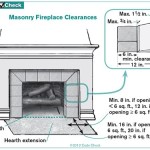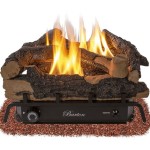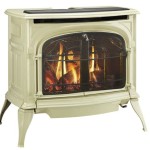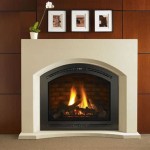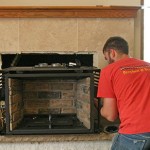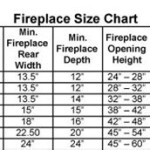The Enduring Appeal of Stone Facade Fireplaces
A fireplace serves as a focal point in any living space, offering warmth, ambiance, and a touch of timeless elegance. Among the myriad of fireplace designs, the stone facade fireplace stands out as a particularly captivating choice. The use of natural or manufactured stone creates a visually striking feature that complements a variety of architectural styles, from rustic cabins to modern homes. Beyond aesthetics, a stone facade fireplace offers practical advantages, contributing to the overall value and comfort of a dwelling.
The construction of a stone facade fireplace involves careful planning and execution. The selection of the appropriate stone material is crucial, as it directly impacts the appearance, durability, and maintenance requirements of the finished product. Considerations such as the size and shape of the stones, the color variations, and the overall texture play a significant role in achieving the desired aesthetic. Furthermore, the installation process requires skilled craftsmanship to ensure a structurally sound and visually appealing result.
The enduring appeal of stone facade fireplaces lies in their ability to seamlessly blend with their surroundings while simultaneously commanding attention. Unlike other fireplace designs that may appear dated or out of place, a stone facade offers a timeless quality that transcends fleeting trends. The natural variations in the stone's color and texture create a unique and organic feel, adding character and depth to the room. This inherent versatility makes stone facade fireplaces a popular choice for homeowners seeking to enhance the aesthetic appeal of their living spaces.
The Aesthetic Versatility of Stone
One of the key advantages of a stone facade fireplace is its aesthetic versatility. Stone is a natural material that comes in a wide range of colors, textures, and sizes, offering homeowners a plethora of design options to suit their individual preferences and the overall style of their homes. Whether the desired aesthetic is rustic, modern, or traditional, there is a stone type that can effectively complement the decor.
For a rustic aesthetic, fieldstone or river rock are popular choices. These stones often feature irregular shapes, varying sizes, and earthy tones, creating a natural and organic look. The rugged texture and natural variations in color add depth and character to the fireplace, evoking a sense of warmth and coziness. This type of stone facade is well-suited for cabins, cottages, and homes with a traditional architectural style.
For a more modern aesthetic, ledgestone or stacked stone veneer can be utilized. These stones are typically cut into rectangular shapes and arranged in a linear pattern, creating a sleek and contemporary look. The clean lines and minimalist design of ledgestone fireplaces complement modern furniture and decor, adding a touch of sophistication to the living space. This type of stone facade is often used in contemporary homes, apartments, and condominiums.
For a traditional aesthetic, limestone or sandstone are classic choices. These stones are known for their smooth textures, neutral colors, and uniform shapes. Limestone and sandstone fireplaces can be easily carved and customized to create intricate designs and decorative elements, adding a touch of elegance and refinement to the room. This type of stone facade is well-suited for formal living rooms, dining rooms, and homes with a traditional architectural style.
The versatility of stone extends beyond the type of stone used. The way the stone is arranged and installed can also significantly impact the overall aesthetic. For example, a dry-stacked stone facade, where the stones are fitted together without mortar, creates a more rustic and natural look. In contrast, a mortared stone facade, where the stones are joined together with mortar, provides a cleaner and more polished finish. Homeowners can also choose to incorporate different patterns and textures into the stone facade, adding visual interest and depth to the fireplace design.
Enhancing Home Value and Energy Efficiency
Beyond its aesthetic appeal, a stone facade fireplace can also enhance the value and energy efficiency of a home. A well-designed and properly installed stone fireplace can significantly increase the perceived value of a property, making it more attractive to potential buyers. The timeless elegance and classic appeal of stone facades are highly sought after by homeowners, making it a worthwhile investment that can pay off in the long run.
A stone facade offers some contribution to the thermal mass of a fireplace, which can help to regulate the temperature of the room and reduce energy consumption. Stone is a dense material that absorbs and stores heat. When the fireplace is in use, the stone facade absorbs the heat from the fire, gradually releasing it back into the room even after the fire has died down. This can help to maintain a consistent temperature in the room and reduce the need for supplemental heating.
Furthermore, a stone facade can help to insulate the fireplace and prevent heat loss. The stone acts as a barrier between the firebox and the surrounding walls, reducing the amount of heat that escapes through the walls. This can improve the energy efficiency of the fireplace and reduce the overall heating costs of the home.
However, it's important to note that the energy efficiency benefits of a stone facade fireplace are limited. The primary function of a fireplace is to provide warmth and ambiance, not to serve as a primary source of heat. To maximize the energy efficiency of a fireplace, it's essential to ensure that it is properly insulated and sealed. Additionally, using a fireplace insert or a stove with a high efficiency rating can significantly improve the overall heating performance.
Material Selection and Installation Considerations
The selection of the appropriate stone material is a critical step in the construction of a stone facade fireplace. The choice of stone should be based on a variety of factors, including the desired aesthetic, the budget, the climate, and the structural integrity of the fireplace. Natural stone and manufactured stone veneer are both popular options, each offering distinct advantages and disadvantages.
Natural stone is a natural material that is quarried from the earth. It is available in a wide range of colors, textures, and sizes, offering homeowners a unique and authentic look. Natural stone is also incredibly durable and long-lasting, making it a worthwhile investment that will stand the test of time. However, natural stone can be more expensive than manufactured stone veneer, and it may require more specialized installation techniques.
Manufactured stone veneer, also known as faux stone, is a man-made material that is designed to replicate the look and feel of natural stone. It is typically made from a mixture of cement, aggregates, and pigments. Manufactured stone veneer is lighter and easier to install than natural stone, making it a more cost-effective option for homeowners. It is also available in a wide range of styles and colors, allowing homeowners to achieve the desired aesthetic without breaking the bank.
Regardless of the type of stone chosen, proper installation is crucial to ensure a structurally sound and visually appealing result. The installation process typically involves preparing the surface, applying a mortar bed, and carefully fitting the stones together. It's essential to follow the manufacturer's instructions and to use high-quality materials to ensure a long-lasting and durable stone facade.
In addition to the stone material and installation techniques, it's also important to consider the overall design of the fireplace. The size and shape of the fireplace should be proportionate to the size of the room. The placement of the fireplace should be carefully considered to maximize its visual impact and to ensure that it does not obstruct any doorways or walkways. The fireplace surround and mantle should be chosen to complement the stone facade and to enhance the overall aesthetic.
Finally, it's essential to consult with a qualified contractor or fireplace specialist to ensure that the stone facade fireplace is installed safely and according to local building codes. A professional contractor can assess the structural integrity of the fireplace, recommend the appropriate materials and installation techniques, and ensure that the finished product meets all safety standards.

Thin Stone Veneers Make A Fireplace Update Easy Swenson Granite 100 Natural Stones

Some Stone Fireplace Surround Ideas You Ll Love Southwest Supply

Natural Stacked Stone Veneer Fireplace Ideas

11 Stone Veneer Fireplace Surround Design Trends Where To Buy

11 Stone Veneer Fireplace Surround Design Trends Where To Buy

Weathered Stone Veneer Natural Thin Cape Cod Nantucket Ma

7 Popular Stone Veneer Fireplace Design Trends Mason S Mark

Thincut Natural Stone Veneer Csi All Things Can En

The Benefits Of Thin Stone Veneer For Your Fireplace

Stone Fireplace Design And Remodel
Related Posts

